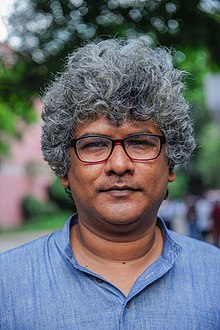
The University of Chittagong is a public research university located in Hathazari, Chittagong, Bangladesh. It was established on 18 August 1966. It is the 5th oldest university in Bangladesh. Its 2,312.32 acres (935.76 ha) campus is the largest among universities in Bangladesh. It is one of the four autonomous by the act universities of Bangladesh.

Zainul Abedin, also known as Shilpacharya was a Bangladeshi painter. He became well known in 1944 through his series of paintings depicting some of the great famines in Bengal during its British colonial period. After the Partition of Indian subcontinent he moved to East Pakistan. In 1948, he helped to establish the Institute of Arts and Crafts at the University of Dhaka. The Indian Express has described him as a legendary Bangladeshi painter and activist. Like many of his contemporaries, his paintings on the Bengal famine of 1943 are viewed as his most characteristic works. His homeland honored him with the title "Shilpacharya" "Great teacher of the arts" for his artistic and visionary attributes. He was the pioneer of the modern art movement that took place in Bangladesh and was rightly considered by Syed Manzoorul Islam as the founding father of Bangladeshi modern arts, soon after Bangladesh earned the status of an independent republic.

Sheikh Mohammed Sultan, popularly known as S M Sultan, was a Bengali decolonial artist who worked in painting and drawing. His fame rests on his striking depictions of exaggeratedly muscular Bangladeshi peasants engaged in the activities of their everyday lives. Sultan's early works were influenced by western technics and forms, particularly impressionism, however, in his later works particularly, works exhibited in 1976, we discover there is a constant temptation to decolonize his art technics and forms.
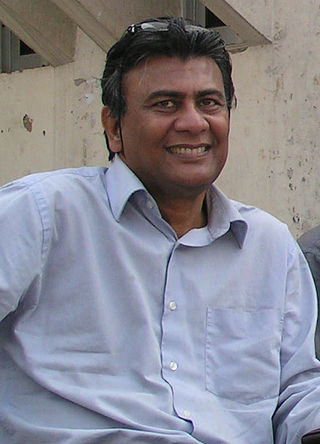
Tareque Masud was a Bangladeshi independent film director, film producer, screenwriter and lyricist. He first found success with the films Muktir Gaan (1995) and Matir Moina (2002), for which he won three international awards, including the International Critics' FIPRESCI Prize, in the Directors' Fortnight at 2002 Cannes Film Festival. The film became Bangladesh's first film to compete for the Academy Award for Best Foreign Language Film.

Adamjee Cantonment College also known as ACC is an educational institution in Dhaka Cantonment, Dhaka, Bangladesh. The institution was established in 1960 following the ideology of originally renowned public schools of England – Eton and Harrow. It is managed by Bangladesh Army and primarily for the children of Army personnel. But students from the civilian section can also study in this college.
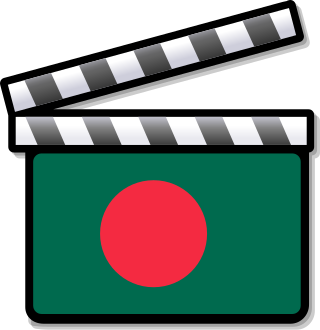
The Cinema of Bangladesh is a diverse and vibrant entity, consisting of films produced across various regions, each contributing its unique linguistic and cultural perspective. Beyond the dominant Dhaka based Bengali-language film industry Dhallywood', which is a portmanteau of "Dhaka" and "Hollywood", Bangladesh is home to cinema in several other languages and dialects. For instance, Chakma cinema from Bandarban, Garo cinema from Sherpur, Meitei and Sylheti cinema from Sylhet, Chatgaiya cinema from Chattogram. These regional cinemas play a crucial role in preserving and promoting the linguistic and cultural heritage of the country. The dominant style of Bangladeshi cinema is melodramatic cinema, which developed from 1947 to 1990 and characterizes most films to this day. Cinema was introduced in Bangladesh in 1898 by the Bradford Bioscope Company, credited to have arranged the first film release in Bangladesh. Between 1913 and 1914, the first production company, Picture House, was opened. A 1928 short silent film titled Sukumari was the first Bengali-produced film in the region. The first full-length film, The Last Kiss, was released in 1931.

Matir Moina is a 2002 Bengali war-drama film written and directed by Tareque Masud. It was his debut feature film. Based on Tareque's story the screenplay was co-written by Tareque and Catherine Masud. In the film, Tareque's childhood experience is revealed against the backdrop of 1969 Mass uprising in East Pakistan on the eve of Bangladesh Liberation War. The film stars Nurul Islam Bablu, Russell Farazi, Jayanta Chattopadhyay, Rokeya Prachy, Soaeb Islam and Lameesa R. Reemjheem in the lead role. It is considered one of the best Bangladeshi films of 21st century.

Ahmed Sofa was a Bangladeshi writer, thinker, novelist, poet, philosopher and public intellectual. Sofa is considered by many, including National Professor Abdur Razzaq and Salimullah Khan, to be the most important Bengali Muslim writer after Mir Mosharraf Hossain and Kazi Nazrul Islam. A writer by occupation, Sofa wrote 18 non-fiction books, 8 novels, 4 collections of poems, 2 collections of short stories, and several books in other genres.
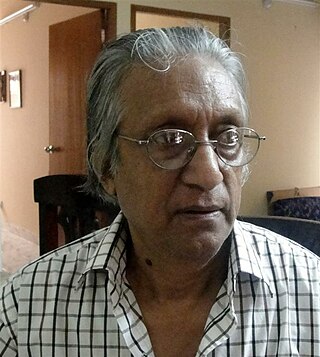
Abdus Shakoor is a Bangladeshi painter and calligrapher.
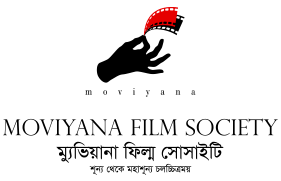
The Moviyana Film Society is one of the largest film culture oriented organisations in Bangladesh. It was established on 10 November 2006. It regularly arranges Film Screenings, Film Festivals, Film Appreciation course and other Film making related courses in different cities of Bangladesh. Film maker & Writer Belayat Hossain Mamun is the founder and incumbent president of this organization.

Akbar Hossain Pathan Dulu, known by the stage name Farooque, was a Bangladeshi actor, politician, businessman and producer. He was known as 'Mia Bhai' to mass people. He appeared in over 150 films in a career spanning more than five decades. Most of his films were commercially and critically successful. Farooque was one of the most recognizable stars of the classical and golden era of Bangladeshi film industry.
Shahiduzzaman Selim is a Bangladeshi theatre, television and film actor. He won the Bangladesh National Film Award for Best Actor in Negative Role for his performance in the film Chorabali (2012). He is currently the president of Actors’ Equity Bangladesh. In 2023 he performed in Priyotoma, which is the highest grossing Bangladesh film of all-time.

Enforced disappearances in Bangladesh are cases in which the Government of Bangladesh directly or indirectly kidnaps people and holds them incommunicado. According to a Dhaka-based human rights group Odhikar, at least 402 people have become victim of enforced disappearance from 2009 to 2017 under the current Awami League administration. These incidents along with extrajudicial killings in Bangladesh has been criticized by The United Nations and human rights groups including Human Rights Watch and Amnesty International. Rapid Action Battalion (RAB), a special paramilitary unit in Bangladesh, is alleged to be behind most of these disappearances even though RAB claimed these allegations to be false. The current Awami League government denies involvement in these forced disappearances even when victims later surface in custody.
Lieutenant Colonel (Dismissed) Tareque Sayeed Mohammad is a former Bangladeshi Army officer who was convicted in the Narayanganj Seven murder case. He was the commanding officer of Bangladesh elite force Rapid Action Battalion (RAB)-11. He is the Son in Law of former minister Mofazzal Hossain Chowdhury.
Syeda Marium Gulshan Hossain is a painter and installation artist based in Dhaka, Bangladesh. Her work has been exhibited extensively. She currently serves as an Assistant Professor of the Department of Painting at University of Development Alternative Dhaka and is a member of the International Miniature Art Society of Florida, USA.
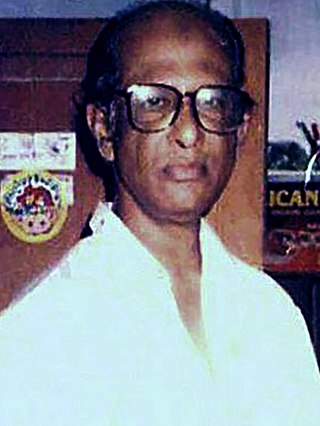
Kazi Anowar Hossain was a Bangladeshi painter who was known for his classical portrayal of rural Bengal. He was awarded Ekushey Padak in 2016 posthumously by the Government of Bangladesh.
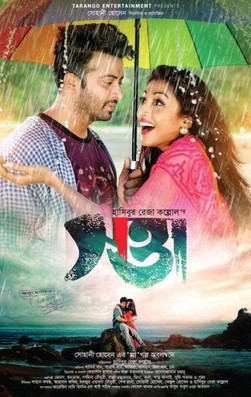
Swatta is a 2017 Bangladeshi romantic tragedy film. The film directed by Hashibur Reza Kallol and produced by Sohani Hossain under the banner of Taranga Entertainment. It is a story written by Sohani Hossain and a screenplay and dialogue written by Ferdous Hassan. The film features Bangladeshi superstar Shakib Khan and Paoli Dam in the lead roles and Kabila, Nasreen, Rina Khan, Don and many have played supporting roles in the film.
Shonar Beri is a 1987 Bengali documentary film. Written and directed by Tareque Masud, the film was his directorial debut. The film was also the first video documentary and was an early attempt at dealing with gender issues in Bangladesh. It deals with the oppressed condition of women in Bangladesh, portraying everyday subordination of women under the Islamic regulation in Bangladeshi society.
The Painter Kazi Anowar Hossain Award was officially launched at the 23rd National Fine Art Exhibition, Bangladesh in 2019. This award is generally given every two years. In 2016, the government of Bangladesh awarded the posthumous Ekushey Padak to artist Kazi Anowar Hossain, the award’s namesake, for his contribution to the field of art and painting. This is a matter of surprise that he only painted boat from his childhood to his death. Father of the Bengali nation Bangabandhu Sheikh Mujibur Rahman affectionately used to call him Nauka Anowar means Boat Anowar in English. Bangladesh's national academy of Art launched this award in memory of this great painter.

Studio 6/6 is an art space, gallery and independent cultural venue based in Dhaka, Bangladesh. Co-founded by Bangladeshi artist-printmaker Najib Tareque, Farhana Afroz Bappy and multilateral artist Taiara Farhana Tareque, the studio was launched in 2015.
